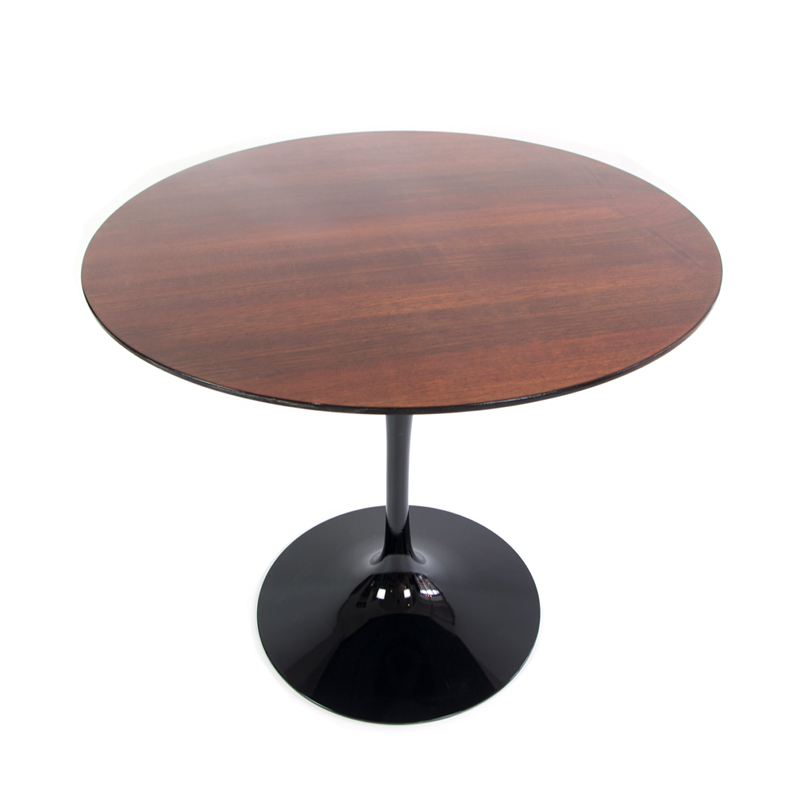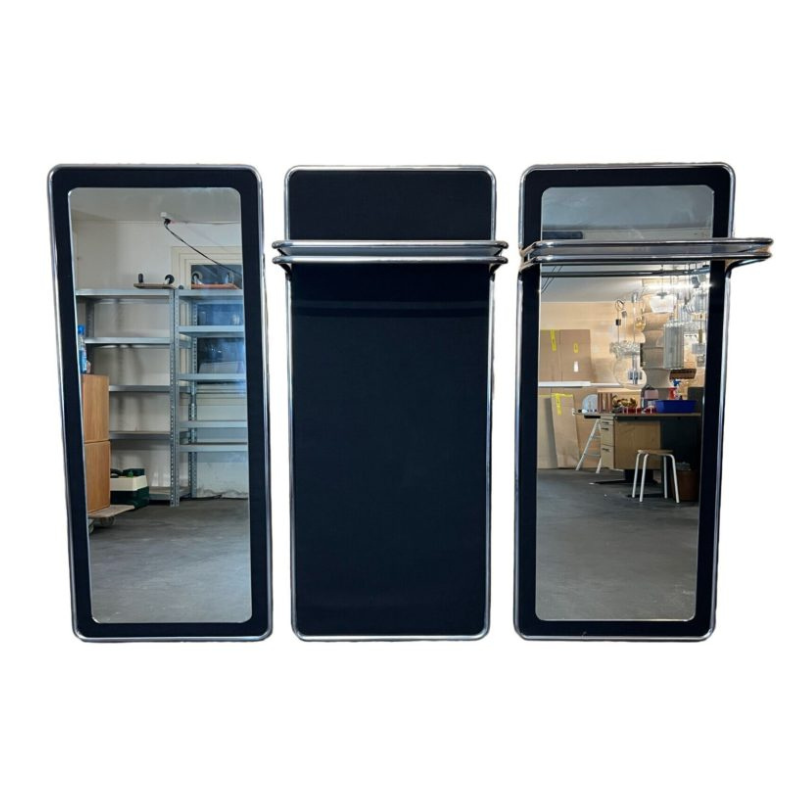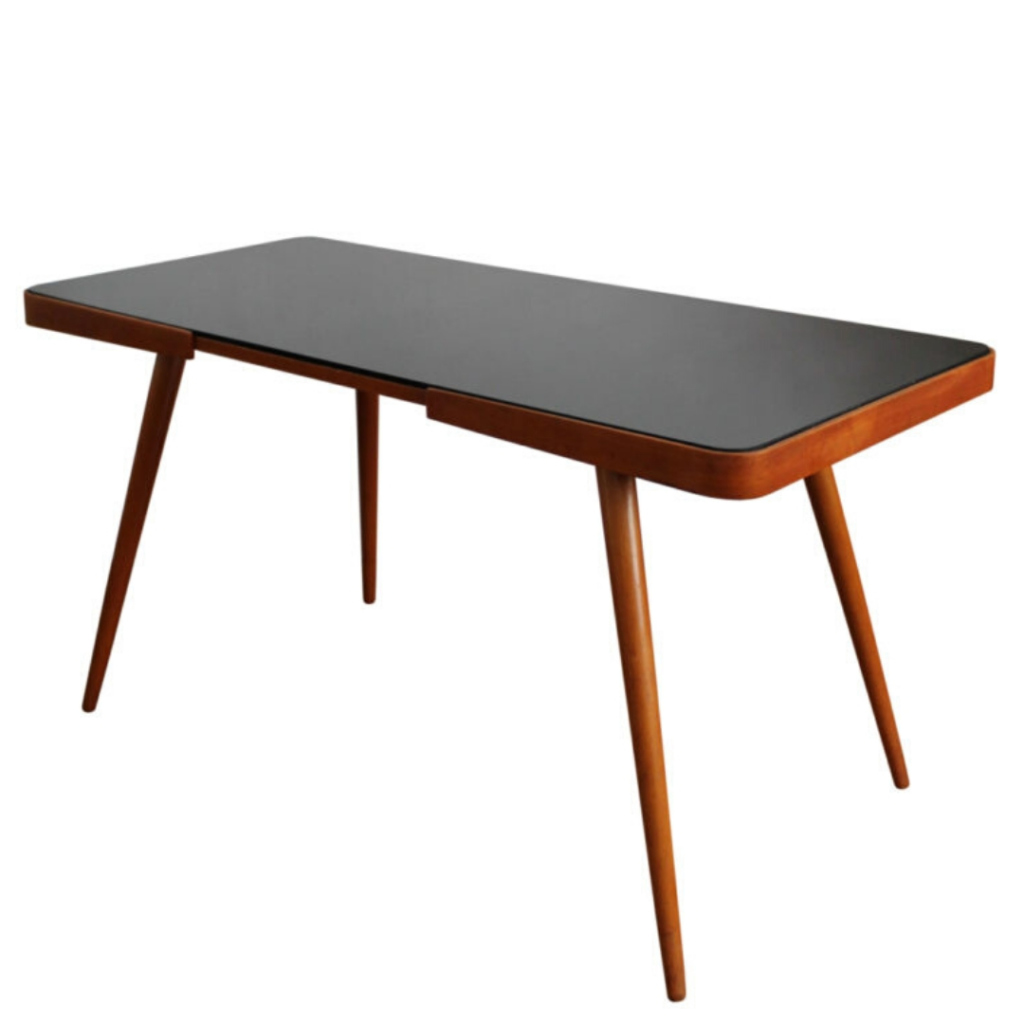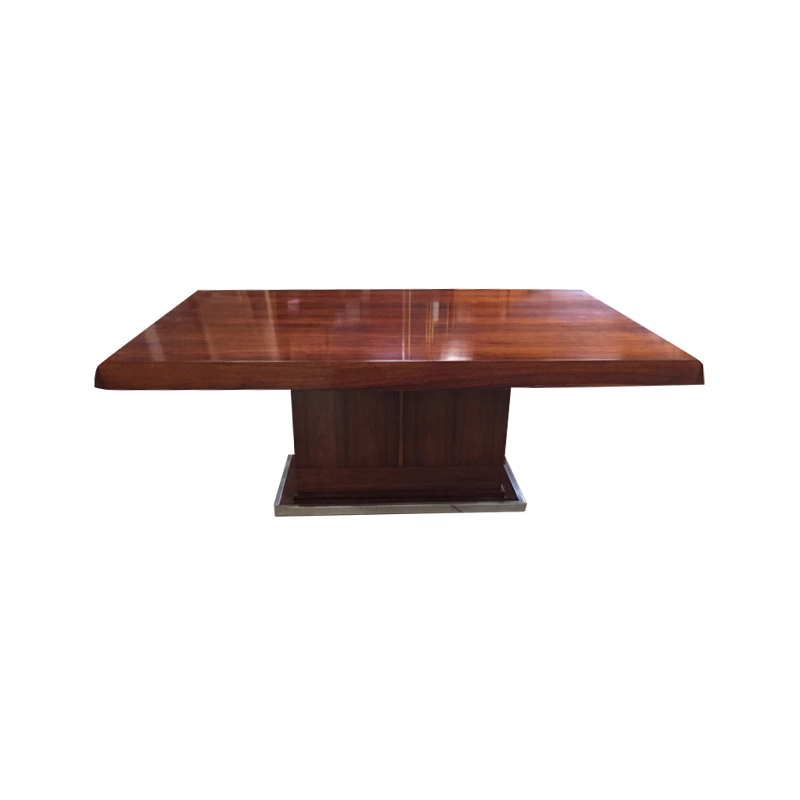Hi there,
I'm talking to a seller about a nice Dyrlund-made credenza (usually the design is attributed to Arne Vodder), and I saw it today, and I'm a little confused by the wood. It doesn't look like teak to me, but it also doesn't seem as dark as rosewood normally is. Is this just lighter-grained rosewood?
And does anyone know if this Dyrlund tag dates it definitely to the 60s or 70s?
Thanks!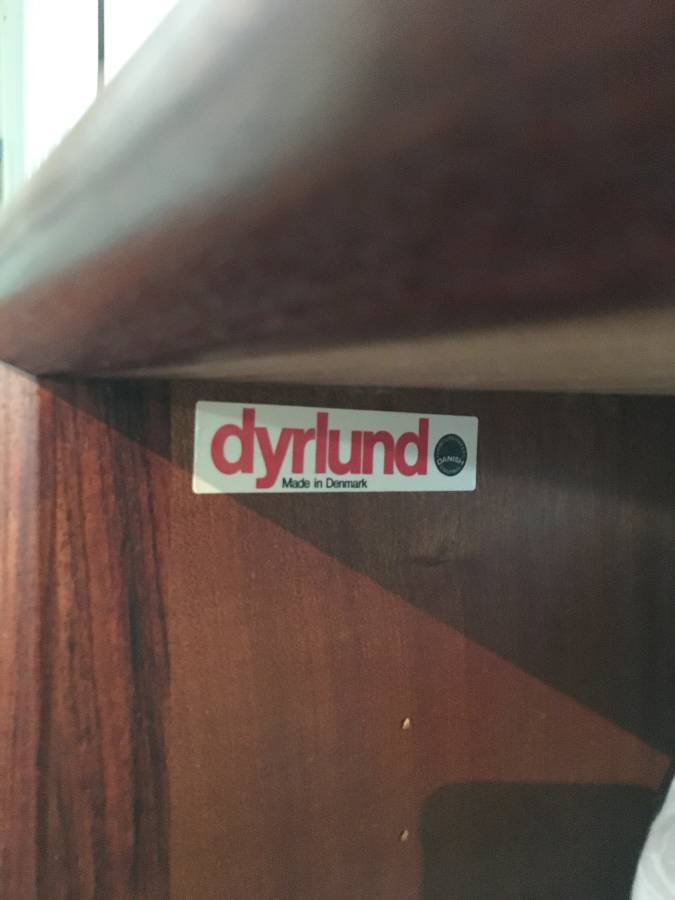
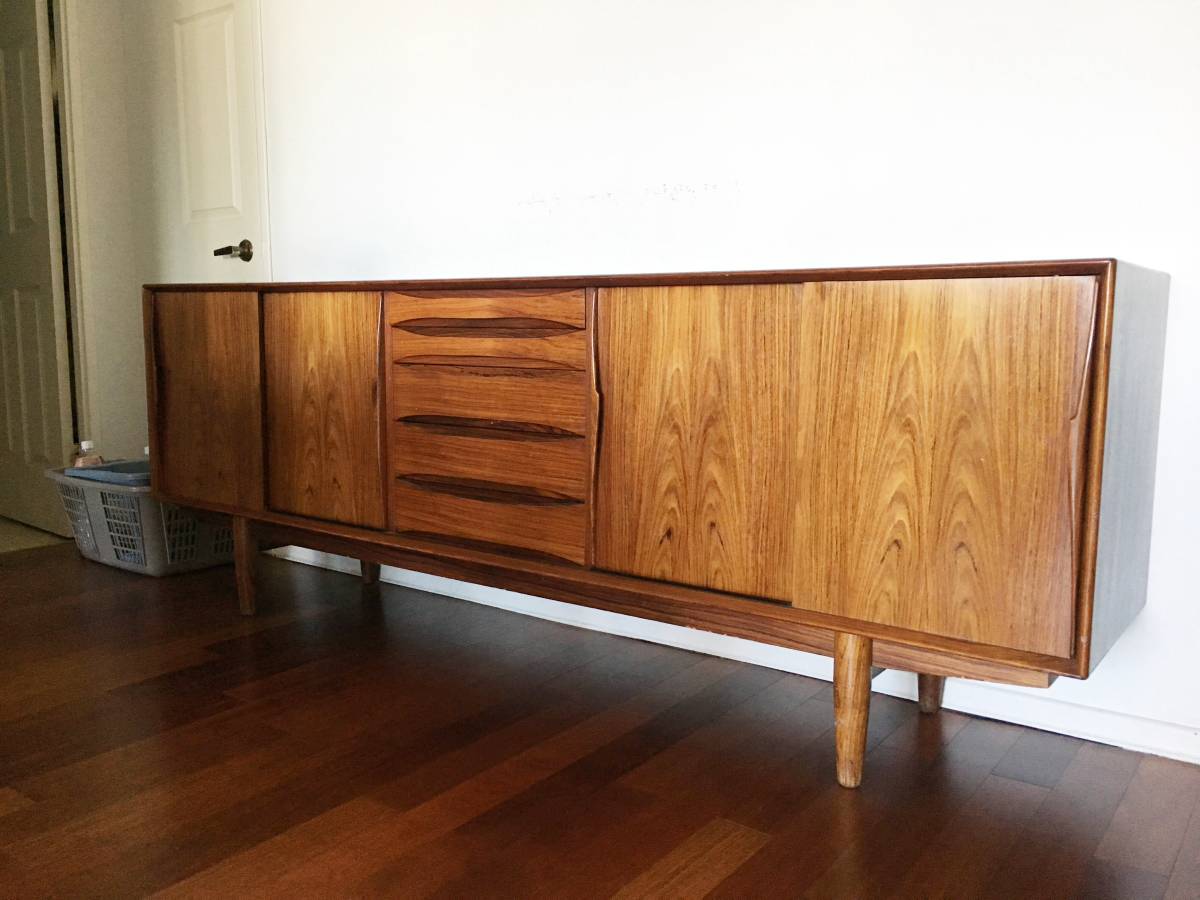 <img class="wpforoimg" src=" http://d1t1u890k7d3ys.cloudfront.net/cdn/farfuture/kXVpK
<img class="wpforoimg" src=" http://d1t1u890k7d3ys.cloudfront.net/cdn/farfuture/kXVpK
It is seriously sun-bleached rosewood, and unfortunately there is not much that can be done to restore it.
People attribute it to Vodder, incorrectly, because of the shape of the pulls on the drawers.
I would pass on it, purely because of the state of the Rosewood, and the fact there is nothing that can be done to correct it.
I would say that it does. To me, the beauty of rosewood is its color and grain variation, once it is irreversibly bleached out, this is drastically reduced. It will be somewhat different for each person, but I expect that many people feel as I do. You can see in the pictures, that the bottom 'apron' is also pretty beat up, and the inside of the pulls still have the darker wood tone, which makes the whole piece look blotchy.
This is merely my opinion, though. The answer to whether it is worth 1000, and whether that is a reasonable price, is a personal one (and a regional one). To me, I would not pay more than half of that for this piece, maybe less, but I also am not purchasing much of my furniture from a retailer, as I like to hunt and restore. I am also in the Mid West, and not NY or LA. I have seen this piece locally, in teak (great condition) for 800, and I have seen this piece in Rosewood (great condition) for 1200, if that helps your decision.
To answer your question above, ... does the Danish Furniture Control tag have the word "Quality" on it? If not, then it is most likely from the 1960's. Also, by the late 60s and into the 70s, Dyrlunds design aesthetic took a major turn for the worse, in my opinion, and I would be surprised if they were still making this particular piece at this time, as it would not fit well with their 'rounded corner' aesthetic that marked the 70s and 80s. But that is just conjecture, and not based on any hard facts.
Only anecdotal at the moment, as I have not used this stripper again, but I had a very faded rosewood table that upon applying a strong alkaline stripper returned to it's deep purple colour.
I'd love to get some more UV damaged rosewood to test this out, perhaps there's an effect that opposes oxalic acid?
If you need any help, please contact us at – info@designaddict.com



